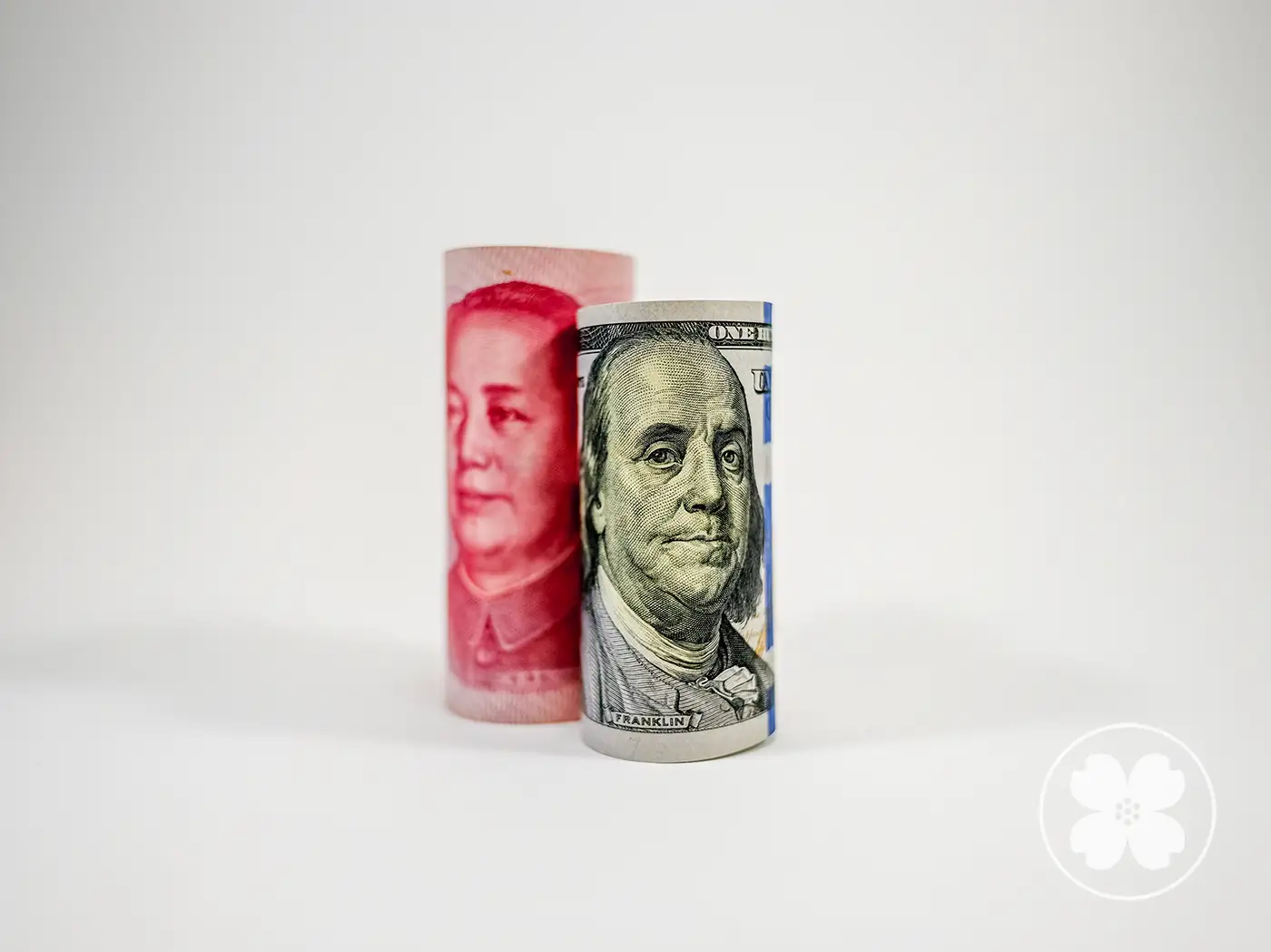Investors closed out 2025 with strong returns, but not without growing unease. A weak Santa Claus rally, rising valuation concerns, and signs of AI fatigue drove sector rotation and shifting global opportunities as markets look toward an uncertain 2026.

Article by Jason Flores, CFA, CAIA – Executive Vice President & Chief Investment Officer
Remember when China was the growth engine of the world? For decades the question wasn’t if, but when the Chinese economy would surpass the US. The growth of their economy since the late 70’s was nothing short of spectacular. While the years of 10-15% growth were over a decade ago, China’s growth stayed above 5% consistently until the COVID shutdowns of 2020. Even now, their gross domestic product (GDP) has a growth rate that most economists dream of at a 4.7% annualized rate in the second quarter of 2024. This rate of growth makes the US annualized 1.4% GDP growth in the first quarter seem anemic. Even with the higher growth rate, the discussion of China overtaking the United States has gone from a given to a maybe in some circles, and a probably not in others.
Post-COVID Economic Landscape
China didn’t emerge from the COVID lockdowns the same as developed economies. In the US and Europe, consumers increased their savings during lockdowns and were willing to splurge as time went on. A new outlook on life and freedom had consumers in the US splurging on travel and experiences. As supply chain disruptions faded, purchases of goods soared. After being in the same dwelling for months on end, home improvement or buying a new home was a move many Americans made. Increased government stimulus and low interest rates fueled consumption.
The Chinese economy was different. After two years of stringent lockdowns, travel and services expanded, but not close to the pace of the US. The world waited for significant stimulus to the Chinese economy that never came. The Chinese government has taken steps to help their economy, but nothing close to investor and economist expectations.
Real Estate Sector
During the lockdowns the real estate meltdown came. It started with Evergrande, listed as the world’s most valuable real estate company in 2018. By 2021, the company was imploding under the weight of over $600 billion in debt. Although the implosion of Evergrande sent shockwaves through the global economy, it was no secret that construction and development were a much larger part of the economy than in other countries, estimated at 20-30% of GDP annually. Stories of ghost cities were common for well over a decade. The feverish construction made China a leading importer of raw materials, lifting the economies of commodity producing countries. The oversupply of construction projects, apartments specifically, came to a halt during COVID. The $13 trillion in local government debt used to finance these projects still lingers and continues to cause concern for the economy. Additionally, the unfinished projects, and declining value of apartments has significantly dented the net worth and confidence of Chinese citizens.
Banks in China are also feeling the pain of the real estate sector. The declining value of property and construction loans held as assets on the banks’ balance sheets are putting them in a precarious position. Defaults are rising, forcing consolidation among smaller banks. Additionally, new loan growth has stalled as citizens are wary of borrowing as they watch their wealth decrease.
Stock Markets and Investments
Unsurprisingly, the stock market is faring poorly. The Shanghai Index returned -7.6% over the last year as of July 17th, compared to the 25.3% return for the S&P 500. This highlights the starkly different view investors have for the Chinese and US economies. For Chinese citizens, real estate and the stock market have turned out to be bad investments. So naturally, they have turned to safer government bonds.
Chinese bonds have been on fire in the past several months. The buying has lowered yields and increased bond prices to potentially unsustainable levels, forcing the People’s Bank of China to issue 11 warnings this year about a bubble. The central bank has expanded its concern from real estate on bank balance sheets to government bonds as well. Now, as Chinese investors turn to government bonds, the risk is elevated there also. The trouble in real estate came from overbuilding. The trouble in the stock market came from too much control.
Regulatory Environment
Jack Ma may not be a familiar name, but he became the face of China to international investors. Ma is the founder of Alibaba, one of the largest technology companies in the world. His enormous public profile may be the reason that Chinese regulators stepped in to pull the plug on a highly anticipated Initial Public Offering (IPO) of Ant Group, an affiliate company of Alibaba in late 2020. Ma virtually disappeared for months, shortly after the IPO was shelved. He went from being seen and heard everywhere to only being seen a few times a year. A parallel in the US would be Elon Musk suddenly disappearing from public life, with random appearances in other countries every few months. After the IPO was pulled and Ma all but disappeared, international investors became nervous.
Nerves only grew in 2021 as the Chinese authorities led a massive crackdown on publicly traded companies in for-profit education, ride-hailing and added strict regulations on video games. Virtually overnight, investors lost billions. These abrupt changes made it hard not to question the safety of Chinese stocks.
The changes in the regulatory landscape not only led to billions in losses but also a significant and continued drop in foreign investment. After years of companies ramping up investments in the country, a new cautious era began. People investing in China took note of the changes, and foreign direct investment has plummeted to levels last seen in 1993, with no real signs of a potential recovery. It is hard to be confident investing in an economy when unannounced changes come quickly to even the biggest of companies or industries.
Demographic Challenges
Demographics have been a concern for China since the government initiated a one child policy in 1979. Even though political leadership changed the policy to three children, the birthrate continues to decline. The expense of childcare and education has led many Chinese citizens to shun children. The imbalance between men and women is among the highest ratios in the world with 110 males for every 100 females. This imbalance will likely continue to decrease childbirth. As of 2022, 31% of the population was over the age of 50. While that doesn’t sound too bad, only 27.6% of the population was younger than 25. 2022 was the first time that deaths outpaced births in China. The shrinking population will cause problems as there are fewer younger workers to support the aging population, ultimately denting future growth.
Trade and Geopolitical Issues
Trade disputes between China and many of its largest customers, namely the US and Europe, do not paint a rosy picture for China over the next few years. Trade controls and tariffs have already hampered their economy, and raised costs, even when shipping through a third country. The prospect of higher tariffs and more stringent trade controls will further impact the economy. Increasing territorial disputes between China and its neighbors India, the Philippines, and Taiwan may lead to outright conflict, which hasn’t happened since 1979.
While there are no easy solutions to the demographic issues in China, there are solutions to the current investment and growth problems. Although these solutions are unlikely to happen any time soon, spurring domestic consumption, increased transparency in government regulations, and an open economy would encourage investment and solve some of the economic challenges in the country. The 5-year planning session currently taking place could be a catalyst for change, but given the recent direction, it seems far-fetched to expect significant change.
At Central Trust Company, we recognized these issues years ago and moved to protect client wealth by investing a large portion of our clients’ Emerging Market investment allocation into a stock fund that avoids Chinese listed companies. While the Chinese economy may overtake the US one day, that day is not today.


